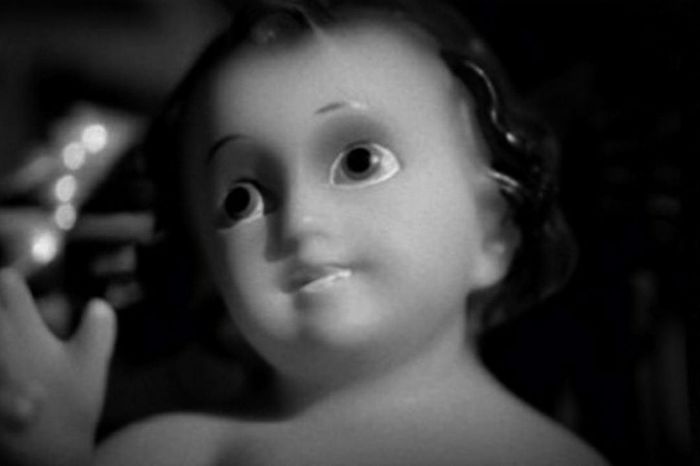
The opening minutes of Lake of Fire, Tony KayeÔÇÖs 2006 documentary about the war against reproductive rights in the U.S., contain what now looks like disturbing political foreshadowing. One of the filmÔÇÖs many talking heads is Roger Hunt, a South Dakota representative who sponsored the WomenÔÇÖs Health and Human Life Protection Act, then considered the countryÔÇÖs most sweeping state ban on abortion. Hunt isnÔÇÖt shy about confessing his true motives: The bill was introduced in hopes of landing in front of the Supreme Court as a direct challenge to Roe v. Wade. ÔÇ£This is our time,ÔÇØ Hunt ominously gloated after his ban passed in early 2006.
The law never reached the bench, and it was repealed less than a year later thanks to a ballot referendum that allowed South Dakotans to vote it out of existence. But if Hunt celebrated too soon, it was likely with the knowledge that his crusade would outlive a single legal defeat. Had the lawmaker himself lived just four more years (he died in 2018), he would have seen his dark dream become a reality. Roe has now been overturned, and states like Texas and Oklahoma immediately passed anti-abortion trigger legislation even more draconian than what Hunt had drafted. What weÔÇÖre seeing is the culmination of decades of organized, sometimes violent opposition to a womanÔÇÖs right to choose.
Lake of Fire isnÔÇÖt only about these concerted attempts to outlaw abortion. ItÔÇÖs an exhaustive nonfiction investigation that comes at the topic of abortion from multiple angles: historical, intellectual, philosophical, and, eventually, emotional. But one of its sturdiest threads is a hard look at a movement that has been steadfast in its goals since the early 1970s, when the Catholic Church began a relentless campaign against abortion rights and the Republican Party latched on to the issue as a fundraising and recruitment driver. The film draws a through-line of persistence across three decades of anti-choice activism. ÔÇ£TheyÔÇÖre prepared to organize for the long haul,ÔÇØ one interviewee explains. Another likens the conflict to a holy war waged by zealots fully willing to fight and die for an outcome they may not even see in their own lifetimes.
Kaye, who examined a different strain of far-right extremism with the fictional American History X, takes a long-haul approach himself. He began shooting interviews, on stark black-and-white 35mm film, during the first Bush presidency and finally stopped filming toward the end of the second. The production spanned 16 years ÔÇö incidentally, the same amount of time that has passed since the film premiered. One gets the sense when watching the documentary that Kaye could have kept filming forever. He has a bottomless journalistic curiosity about this defining issue of American life.
Although Lake of Fire offers a general overview of how the political landscape has changed since Roe v. Wade, it gets granular on the ÔÇÖ90s, when tactics escalated from intimidation to murdering doctors and bombing clinics. One of the most chilling conclusions the film draws is that these acts of terrorism effectively galvanized the anti-abortion movement (especially when the leaders of various organizations refused to condemn the violence), to say nothing of how successfully they diminished the number of medical professionals willing to perform a safe, legal procedure. KayeÔÇÖs habit of embedding himself in the regular clash of demonstrators results in a very unhappy accident: He gets footage of both physician John Britton, who was killed in cold blood shortly thereafter, and his murderer, Paul Hill.
Those seeking explicit pro-choice agitprop wonÔÇÖt find it here. Kaye doesnÔÇÖt opine from behind the camera, and he speaks to people all across the ideological spectrum, including some of the most prominent anti-choice leaders, who are happy to gleefully spout their fundamentalist talking points. (Among those interviewed is ÔÇ£RoeÔÇØ herself, Norma McCorvey, who eventually converted to Catholicism and became a spokesperson for anti-abortion groups, though she would later, on her deathbed, confess that she switched sides only because those groups had paid her.) Lake of Fire also controversially cuts to real abortion footage and the kind of graphic imagery of fetal tissue that the right deploys as a propaganda tool. For Kaye, these scenes are an extension of his desire to look clearly and soberly at the topic, in this case by capturing a medical procedure from a strictly medical perspective.
But the film isnÔÇÖt apolitical. ItÔÇÖs too strategic in its selection of sound bites and its habit of juxtaposing sensible logic with the sermons of men who canÔÇÖt help but spew some falsehood or outrageous position whenever the camera finds them. (One abortion opponent, Andrew Cabot, proudly admits that he believes anyone who takes the LordÔÇÖs name in vain should be executed.) Kaye betrays where his sympathies truly lie with the late introduction of a v├®rit├® subplot following a woman who has come to a clinic to have her pregnancy terminated. These scenes find the personal in an issue more often framed as political, compassionately portraying the experience of abortion (including the kind of conversations that happen at Planned Parenthood) while articulating a choice made for different reasons by different people but rarely lightly.
Today, what really lingers while watching this gripping two-and-a-half-hour documentary is the unsettling impression of a coordinated plan of attack executed over the years by a group of fanatics who never waver in their conviction and who believe the ends justify almost any means. Many of KayeÔÇÖs talking heads on the left, including Noam Chomsky and Nat Hentoff, are big thinkers interested in engaging with the big moral questions surrounding abortion. But what good is that kind of nuance in a struggle against absolutists who are hell-bent on subjecting everyone to their moral position? Right now, weÔÇÖre dangerously close to the America pined for by men like Roger Hunt and the militants willing to kill for his cause. For anyone hoping to understand how we got to this point, Lake of Fire is essential viewing.

